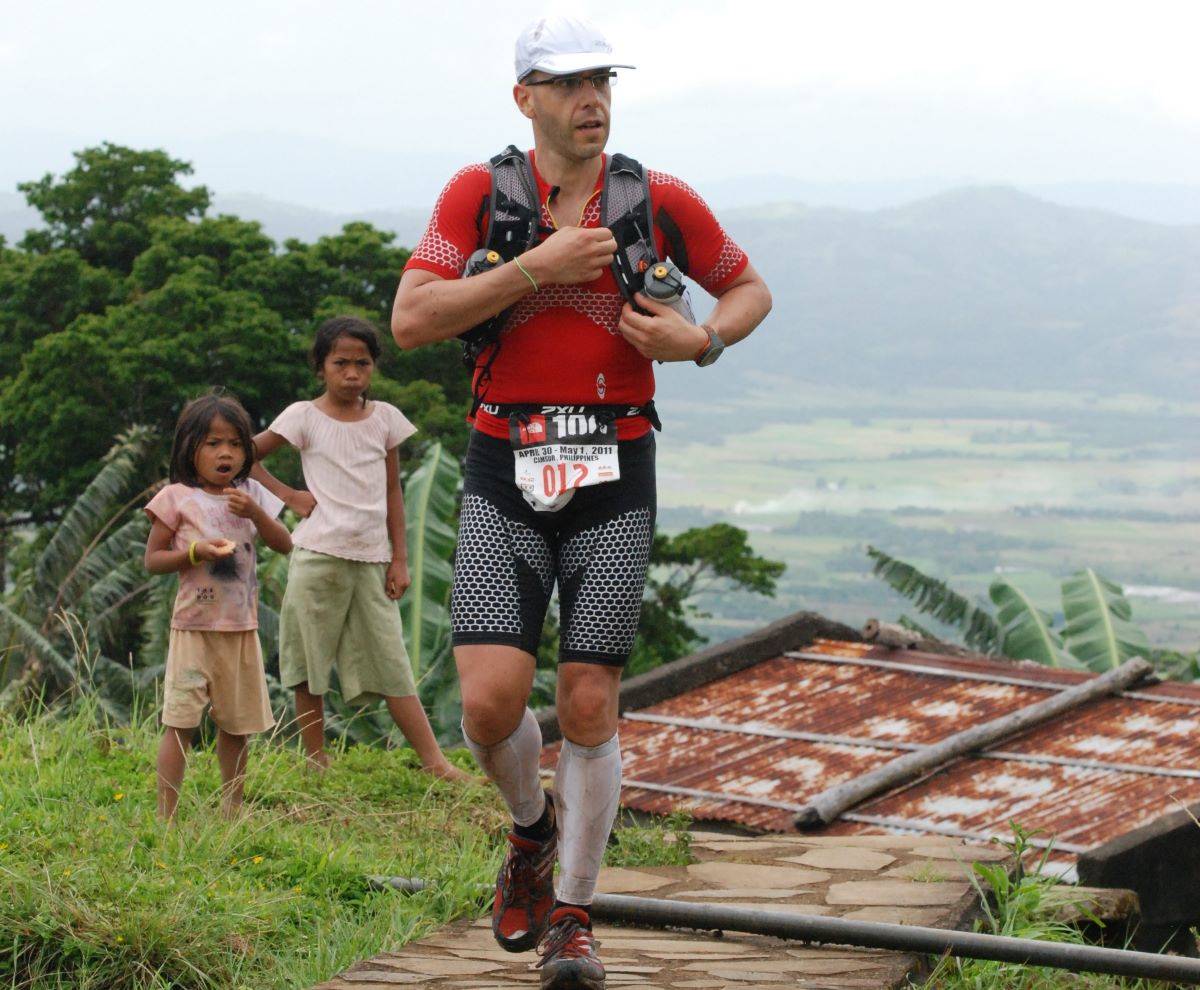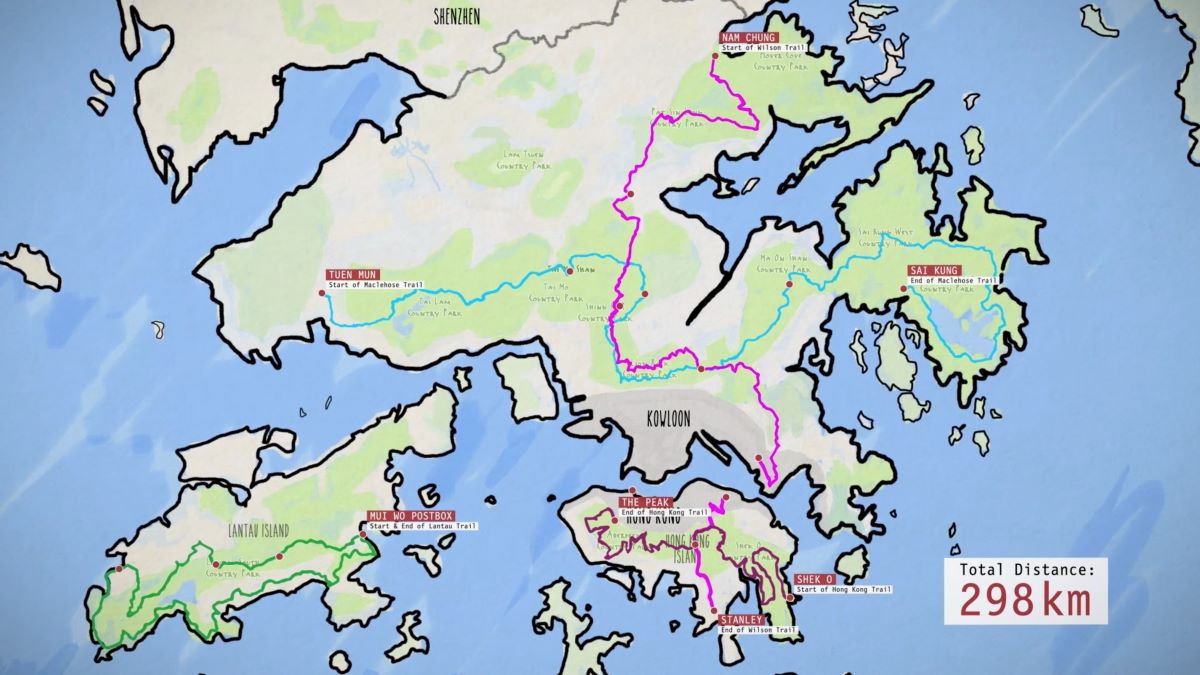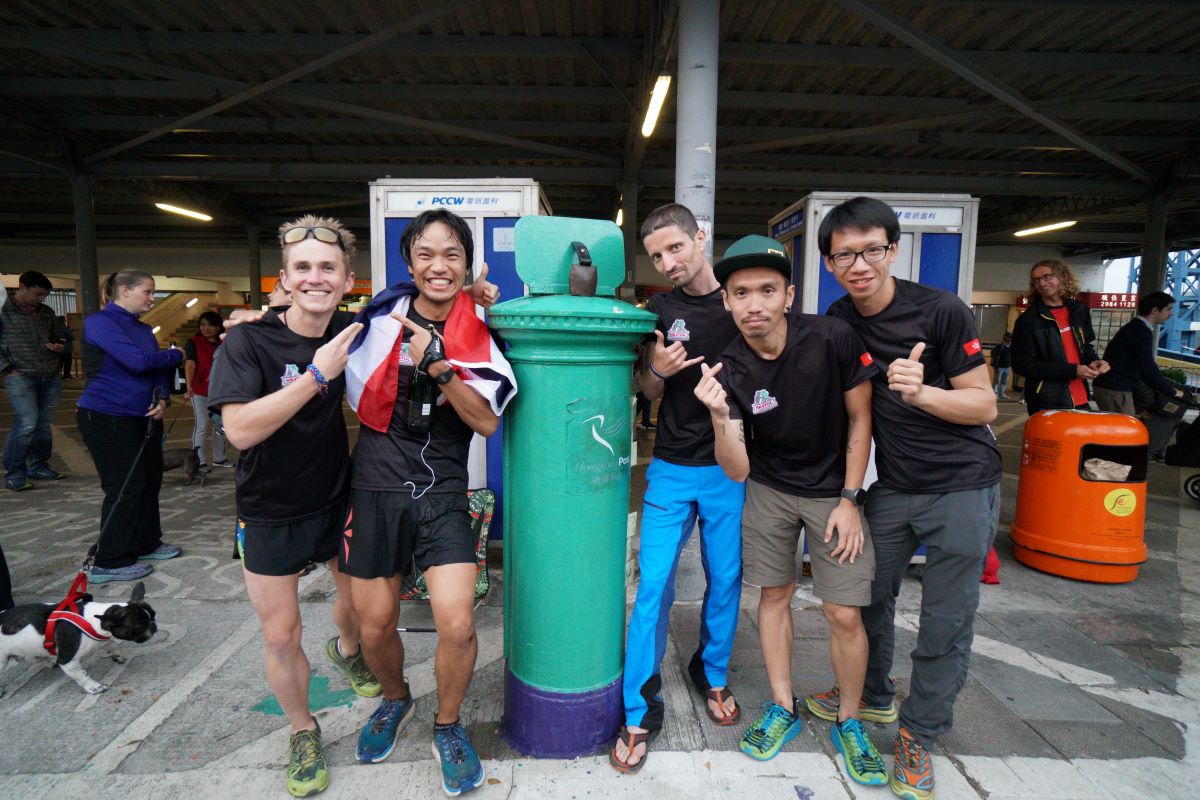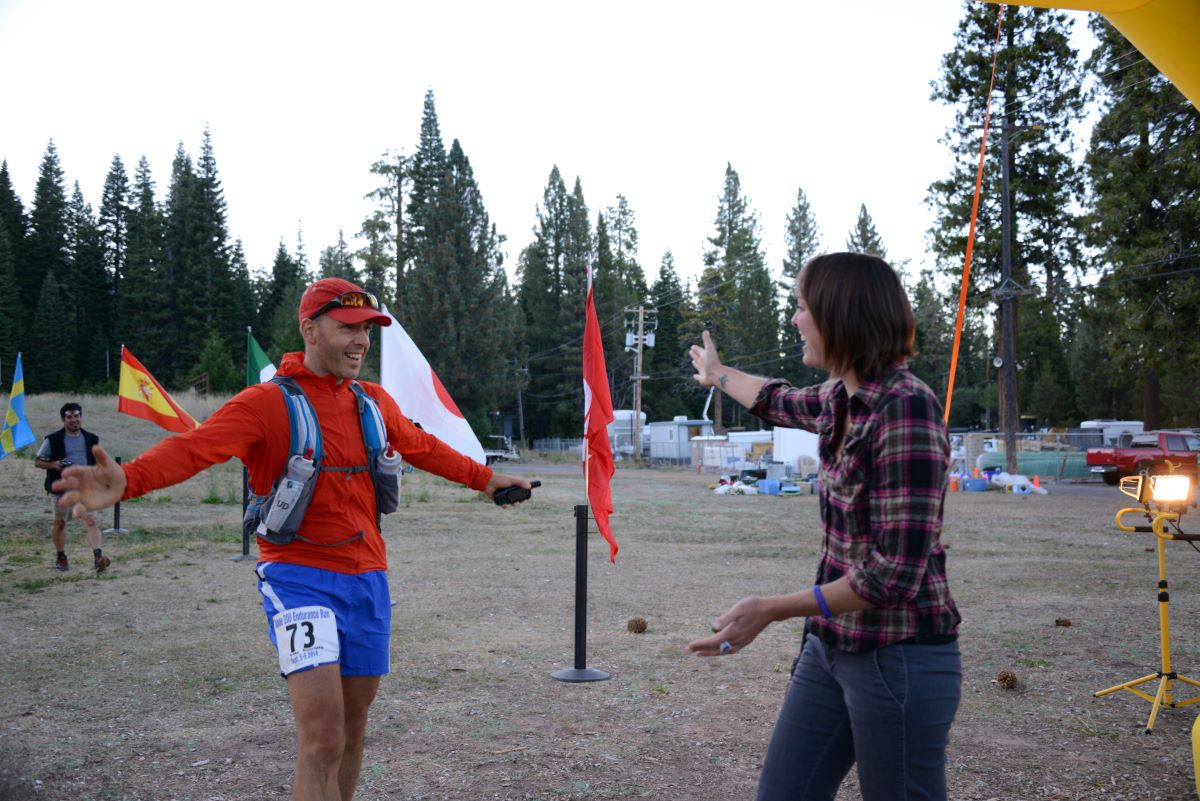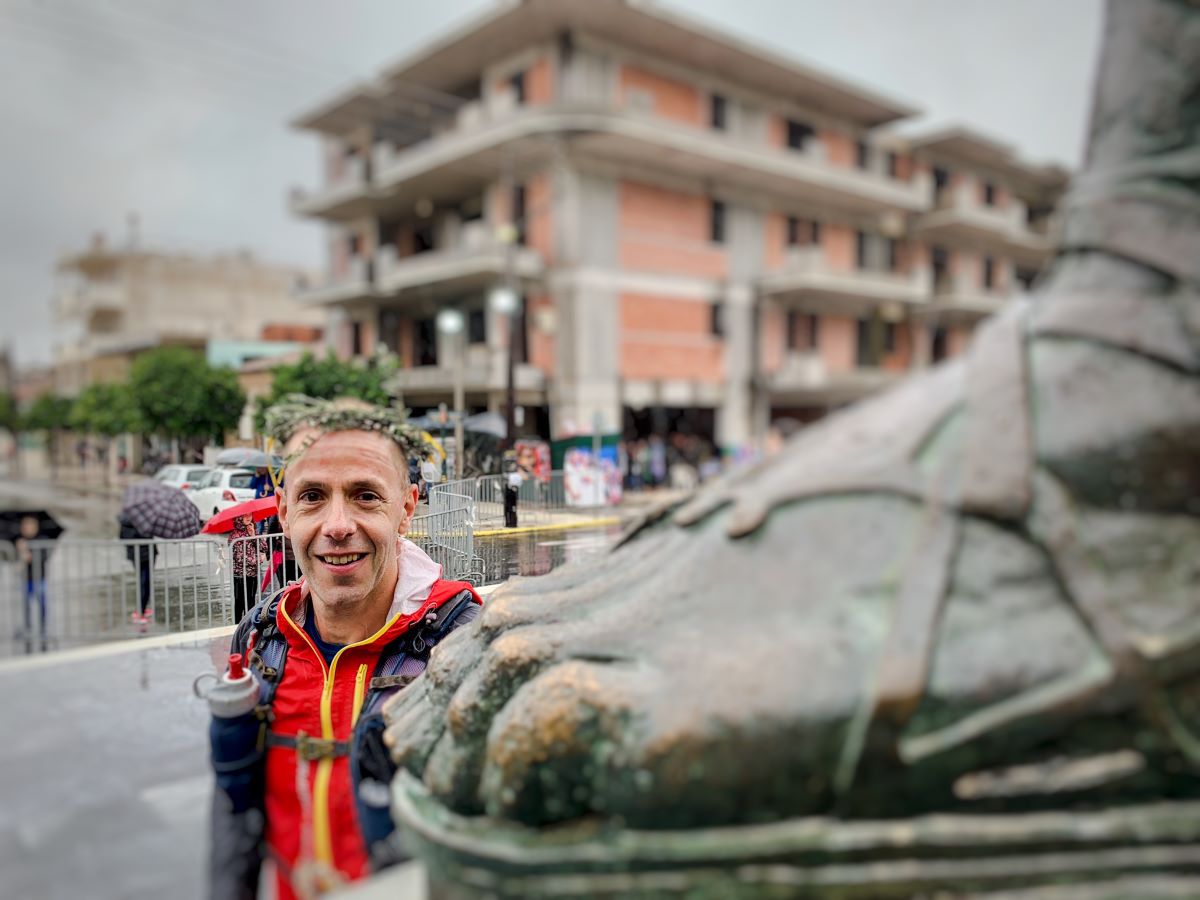Ultrarunner and event director Andre Blumberg first started running in response to a midlife crisis. At 39 years old, the hardworking consultant was immersed in a work-hard, play-hard lifestyle in Singapore that didn’t include exercise or the outdoors. His weeks entailed long hours at the desk, late-night heavy meals, and partying — a pace that he had sustained for nearly 14 years.
Then his annual medical exam showed extremely high cholesterol readings and an obese-level body mass index. “I was about to turn 40 years old and was well over 100 kilograms (220 pounds) in weight. The doctor said he needed to put me on cholesterol-lowering medication,” said Blumberg, who is now 52 years old.
Overnight, Blumberg stopped drinking alcohol, radically changed his diet, and booked a weeklong cleanse retreat in Northern Thailand to celebrate entering his fifth decade.
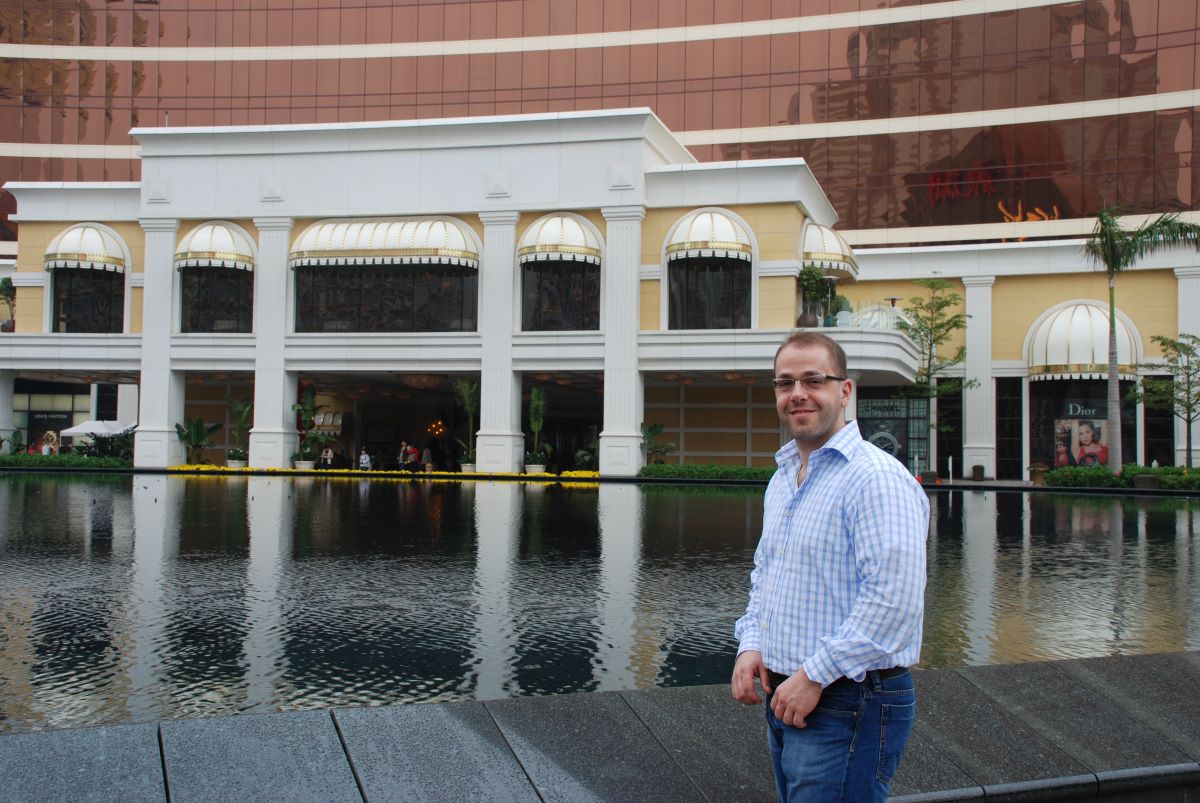
Andre Blumberg before he discovered running, in March 2007 in Macau. All photos: Patchanida Pongsubkarun
Cleanse Retreats
“You drink lots of teas, and give your intestines and colon a break from needing to work all the time. I was just amazed. It was very difficult initially, because I’m also a big coffee addict and had headaches from the withdrawal. Coming out of the cleanse, I felt reborn after having lost some weight but also having mental clarity that I hadn’t experienced in a long time,” said Blumberg, who registered for several more cleanses over the next six months and then decided he would start to exercise in 2010.
“I was too heavy to do anything weight bearing, so I didn’t run, because it’d be too painful on my knees. I started stationary biking for 10 minutes, then up to 20 minutes, then 30 minutes, then 60 minutes. Then I moved to a treadmill and worked myself up,” said Blumberg, who had lived in Hong Kong for nine years at that point.
Born and raised in a 500-person village in the countryside of Germany, near Cologne, Blumberg dabbled in sports but didn’t have “large sporting ambitions,” hadn’t tried track and field, and an active lifestyle wasn’t a part of his family life.
In college, he ran a bit while attending the University of Cologne, where he studied business administration, business informatics, and computer science. In 1995, he graduated and landed an internship in Singapore as a consultant implementing large information technology software solutions. He also had clients in neighboring countries like Malaysia, the Philippines, and Thailand.
Today, he’s lived in Asia and the Asia Pacific Region for 27 years, including 21 years in Hong Kong. Now, Blumberg is the chief information officer of CLP Power Hong Kong, an electric utility company.
A Robust Hong Kong Trail System
But back when Blumberg was going through his midlife shift, he’d been in Hong Kong for nearly a decade and had never set foot on any trails. “Most people see Hong Kong as a city full of concrete and steel skyscrapers and as a dense metropolis, which it is. But most people who haven’t been here don’t realize that 70% of Hong Kong is country parks, a hilly landscape, and an extensive trail system,” said Blumberg, who got tired of working out at the gym and had a revelation when he learned a trail system existed. Still relatively unfit, he said, he started by hiking.
“I could run for hours without seeing anyone, and the trails are so close. I live on the 59th floor of a high-rise building, and I can see one of our peaks at 3,000 feet. I can see a lot of the trail system, and you don’t have to drive. I can run 20 minutes and I’m on two different trails, or I can jump in a taxi,” explained Blumberg.
After those first six months, he lost 60 pounds, and the continued weight loss made it easier for him to move. His fitness and training continued to improve every week.
In April 2010, he signed up for his first race: the Round the Island Time Trial, a local, small-scale event. “I finished and I was immediately hooked. I went to run The North Face 100k – Singapore in September 2010 and came in third. I never expected to podium. So, I went from a work-hard, play-hard lifestyle to an ultrarunning addiction. For a newbie who was grossly obese and a borderline alcohol addict 10 months prior, it was remarkable for me,” said Blumberg.
A Knack for ‘Slams’
Next, he ran the 2011 Vibram Hong Kong 100k, finishing in 10th place. Blumberg quickly “developed a knack for slams.” He tackled all five The North Face 100-kilometer events in the Asia Pacific including in China, Australia, Taiwan, Singapore, and the Philippines within a 16-day period.
“I’d travel and do a race on the weekend, then fly back to Hong Kong to work. I basically did three 100ks over three successive weekends in different countries. Australia is a good nine-hour flight away, so it’s not just jumping on a flight. That’s when I said, ‘Ah, I seem I recover quite well,’” said Blumberg, who then experimented with a vegetarian diet for 18 months, which helped to reduce the inflammation in his body and enhanced his recovery. There were limited vegetarian food options where he lived at the time, so he didn’t maintain the diet.
Creating the Hong Kong Four Trails Ultra Challenge
Also in 2011, Blumberg was deciding what to do over the Chinese New Year, a four-day national holiday. Usually, he and his wife, Paper, would travel, but they decided to stay home in Hong Kong that year.
He started studying four long-distance trails that surround Hong Kong and an idea percolated to combine the four into a single objective.
The four trails were the 70k Lantau Trail, the 78k Wilson Trail, 50k Hong Kong Trail, and the 100k MacLehose Trail.
“I asked around if anyone had ever run these four trails in four days. People said, ‘No, of course not, it’s impossible and cannot be done.’ I said, ‘Let’s try.’ The total is 298 kilometers approximately, and 14,500 meters of elevation gain. To my surprise, I managed to finish them: one a day. I was happy I finished but I was also disappointed, because it was too easy,” said Blumberg.
The original grassroots four-trail event became known as the Hong Kong 4in4 Challenge, which has grown in popularity and is held annually during Christmas.
The following year, in 2012, Blumberg tinkered with the format, combined the two shortest trails, and finished all four trails in three days. Six runners started and three finished.
Blumberg also completed his first 100 miler in 2012, the Northburn Station 100 Mile in New Zealand followed by the Ultra-Trail Mt. Fuji in Japan, which is also 100 miles long. “I felt that the longer distances suited me better, because I’m not very fast but I seem to compensate by being stubborn and not quitting and trying to hang in there,” he said.
In 2013, he changed the format of the four-trails challenge again, rearranging the sequence to make it logistically sensible for a nonstop format, which made it even more difficult.
“I didn’t run it, because in that third year, it became popular, and I wanted to direct it and I’ve done that ever since. I haven’t been able to run it again, yet. It is a fully self-supported event, there are no additional course markings, and zero support is allowed. It’s on trail, and there are trail signs. You can have support between the four trails, which are distinct and noncontinuous. You can have a crew pick you up and drive you to the next trail, but the commute is included in the overall time,” explained Blumberg.
Today, this nonstop event is known as the Hong Kong Four Trails Ultra Challenge, with all four long-distance trails covered in a self-supported format in 60 hours, held annually each January. The format takes runners in the reverse direction of the original format: the 100k Maclehose Trail, 78k Wilson Trail, 50k Hong Kong Trail, and the 70k Lantau Trail.
“Lantau is the last trail and it’s a loop around Lantau Island. The start and finish is at Ferry Pier. In front of the pier is a green colonial post box that you have to kiss to designate the finish of the challenge,” said Blumberg.
For the Hong Kong Four Trails Ultra Challenge and the Hong Kong 4in4 Challenge, a course map and GPX file are not provided. Inspired by the Barkley Marathons, Blumberg also throws in variations each year, adding a bit more difficulty. One year, no trekking poles were allowed and another year, no audio devices were allowed.
Overall, Blumberg sees hosting the events as a way to give back to the ultrarunning community.
“I don’t want these to be elite events. I want a wide variety and diversity of participants,” said Blumberg, and added, “I have been keen to get more women to participate and tried various attempts like promoting the event to women and researching female ultrarunners and inviting them or asking them to consider participating. One year, I had a rule, if a male participant can make two successful referrals to women, then he can get a spot. I’m pleased to say, in this year’s Hong Kong Four Trails Ultra Challenge we had eight women participate and eight males, so it was 50/50 gender participation,” said Blumberg.
Blumberg also enjoys sponsoring athletes to travel, covering their flights and hotel, and race in high-profile event. “For other events, I have supported less privileged athletes in the region including from Thailand and the Philippines to come to Hong Kong to compete in the Vibram Hong Kong 100k and The North Face 100k – Hong Kong. Being able to afford it, it’s my way to give back and to help give exposure to people that are athletically talented and do well domestically but don’t have financial means to travel internationally,” he said.
The U.S. Grand Slam of Ultrarunning
In 2013, he got into the Western States 100 and decided to do the Grand Slam of Ultrarunning, which entails running four of the five oldest century-distance races in the United States all in the same summer: the Western States 100, Old Dominion 100 Mile, Vermont 100 Mile, Leadville 100 Mile, and the Wasatch Front 100 Mile.
“I hired at that time Karl Meltzer as my coach. I felt like, this is really next level and I want to get better and not let that once-in-a-lifetime opportunity go without good preparation. Karl is known for his wins and experiences. He coached me for a year during the Grand Slam. I flew to the U.S. and then flew back to work: four flights over there and back, so a significant investment in time and money. I spent almost all of my annual leave on running the Grand Slam, and it was a really great experience. I love the 100-mile distance, and I love the U.S. culture and vibe around 100 milers,” said Blumberg, who got “hooked on the 100-mile distance and U.S. ultrarunning scene.”

Andre Blumberg finishing the 2013 Western States 100, alongside his wife and crew, Patchanida Pongsubkarun.
He kept increasing his distance, registering the following year for the 2014 Badwater 135 Mile and the inaugural Tahoe 200 Mile.
After his experience at the Tahoe 200 Mile, “I was thinking to do a triple crown or slam of 200 milers in the U.S., but it is a bit too much when you have to fly back and forth from Asia, because that’s another level of commitment. You can do a 100 miler in a weekend but with 200 milers, it’s at least a week plus the commute. I haven’t made the commitment of the time.
“If I could spend two to three months in the summer in the U.S. that would be perfect and maybe you could fly twice the whole summer. I would enjoy renting a truck, driving around, training, and discovering different states and living that lifestyle. But it would be difficult to combine with my job, so maybe after retirement or between jobs,” said Blumberg.
Next, he did the 2015 Angeles Crest 100 Mile in California. “It’s an amazing event. Paper, my wife, has always been very supportive, and she would always take up crewing duties. We would have these destination races and plan a holiday around the race, so maybe 10 days in Los Angeles, California, before or after. It’s a good combination. She likes to travel and I like running,” shared Blumberg.
The German Grand Slam
In 2016, Blumberg did the German equivalent of the U.S.’s Grand Slam of Ultrarunning, comprised of four long-distance events: three on trail, one on road, and a total of more than 1,000 kilometers, so another notch up in distance. The events were the Jurasteig Nonstop Ultratrail 239km, the 200k Hexenstieg Ultra, the TorTour de Ruhr – 230km Nonstop, and the WiBoLT 320 km Nonstop-Ultralauf, and they all took place in April and May of that year.
“Each of those Germany races are well over 100 miles, the last one is 200 miles, and they’re very compressed. The Grand Slam in the U.S. was in 10 weeks. The German Grand Slam was in a span of seven weeks. I covered them over three flights, back and forth, which is a 12-hour flight one-way from Hong Kong. One trip I did two of them together,” said Blumberg.
“I like the logistical aspect of ultrarunning and these slams with my timing splits and charts, my supplies, and the planning. I like the logistics of plotting out my travel and annual leave and optimizing and maximizing the benefit I get out of it, which is a nice side effect in those goals,” said Blumberg.
Upcoming Goals
To date, Blumberg has completed nearly 30 ultrarunning events. By 2018, he felt like he’d reached his “best year ever” for fitness and training. He won and set a course record at the TorTour de Ruhr – 230km Nonstop, a road race, finished the Hardrock 100, and another road race in Greece, the Spartathlon.
The next year, he was overcoming an injury followed by the COVID-19 pandemic, which continues to cause strict travel requirements into Hong Kong, making traveling for races more complicated, expensive, and risky.
“I really struggled with not having a race on my calendar, and I still need to come back from that now. I hope that [freedom] will come back at some stage, soon. I don’t have concrete running plans, but I hope to get back to the Hardrock 100 one day. I have bucket-list runs now but nothing concrete just yet,” said Blumberg, who gave up his spot in Hardrock for 2022 due to the tight travel restrictions.
For the immediate and long-term future, he’ll continue to host the local Hong Kong Four Trails Ultra Challenge and the Hong Kong 4in4 Challenge.
“It’s interesting to see how former participants collaborate and share tips and tricks, similar to other ultras, and the times get better year after year. The runners become smarter at their strategies and logistics. I like that about the sport that it’s both collaborative and competitive,” said Blumberg.
Call for Comments
- Have you run with Andre Blumberg? Share your Andre stories in the comments section!
- Have you participated in one of the events he hosts?
- Are you familiar with the four Hong Kong trails covered in this article?
